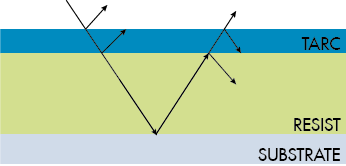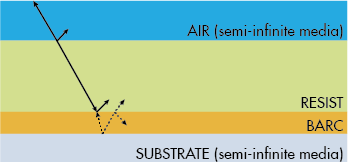
Company
Dr. Terry Brewer’s discovery of anti-reflective coatings resulted in a revolution in the global microelectronics industry and ushered in today’s high-speed, lightweight electronic devices.
Learn MoreAdvanced Materials
Advanced materials for the protection and enhancement of optics, displays, and other microelectronics.
Learn MoreLithography
Our line of products stretches across the whole spectrum of lithography wavelengths and is the most comprehensive product lineup in the industry.
Learn MoreSmart Devices
At Brewer Science, we are focused on delivering critical, real-time information to our customers to help them achieve their goals, solve their problems, and improve their current systems.
Learn MorePackaging Solutions
Brewer Science is revolutionizing packaging solutions with innovative bonding and debonding technologies.
Learn More TARCs use the refractive index and thickness of two films (resist and TARC) to control reflectivity through destructive interference only. It does not change the reflectivity of the substrate.
TARCs use the refractive index and thickness of two films (resist and TARC) to control reflectivity through destructive interference only. It does not change the reflectivity of the substrate. BARCs use the refractive index, thickness and absorption of light to control reflectivity. They effectively make the substrate non-reflective.
BARCs use the refractive index, thickness and absorption of light to control reflectivity. They effectively make the substrate non-reflective.